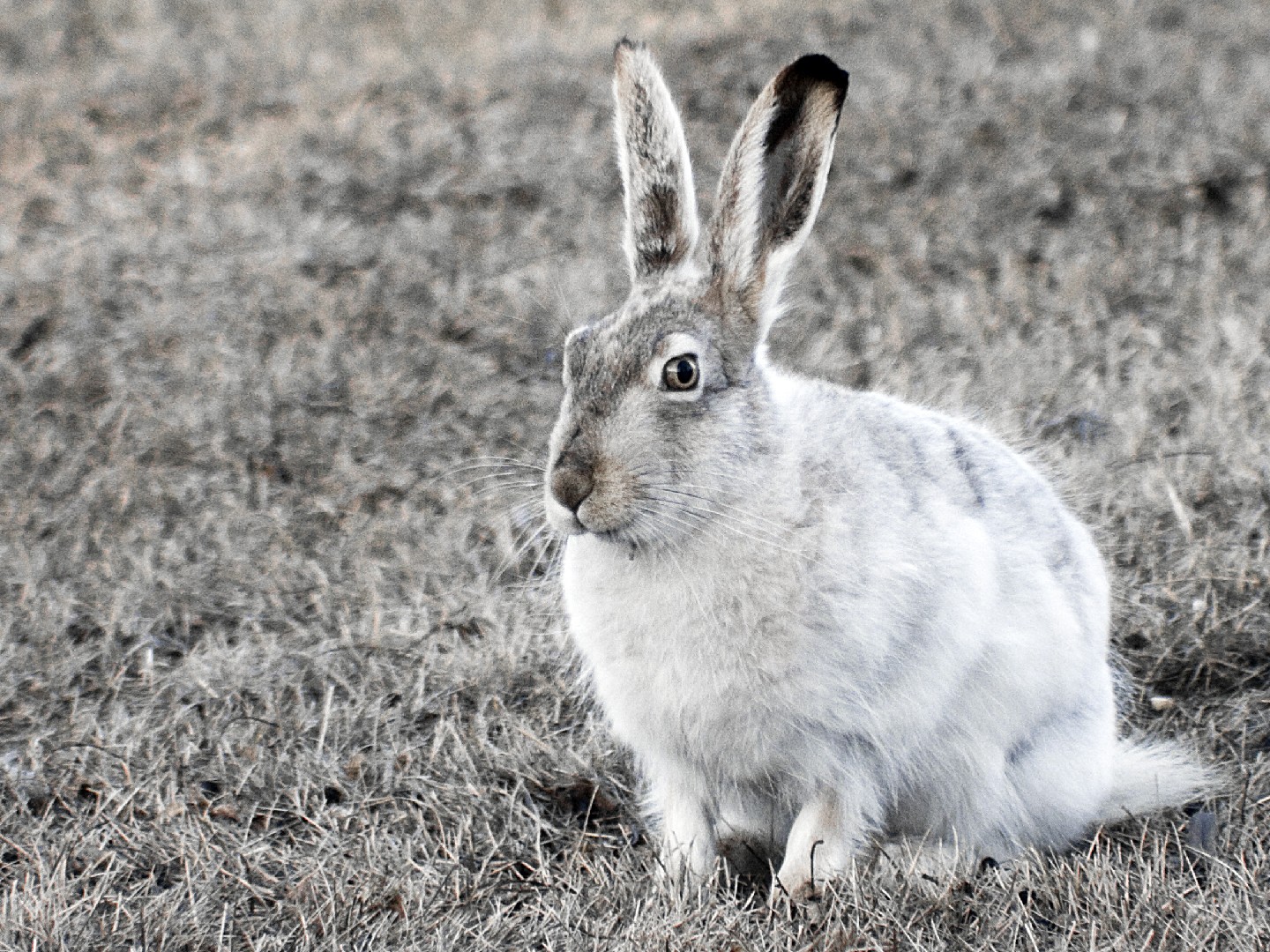White-tailed jackrabbit
A species of Hares and jackrabbits, Also known as White jack, Western white-tailed jackrabbit Scientific name : Lepus townsendii Genus : Hares and jackrabbits
White-tailed jackrabbit, A species of Hares and jackrabbits
Also known as:
White jack, Western white-tailed jackrabbit
Scientific name: Lepus townsendii
Genus: Hares and jackrabbits
Content
Description General Info
 Photo By Adam Lowe , used under CC-BY-SA-3.0 /Cropped and compressed from original
Photo By Adam Lowe , used under CC-BY-SA-3.0 /Cropped and compressed from original Description
The white-tailed jackrabbit is a large species of hare and the largest species called "jackrabbit", although two larger hares (the Arctic and Alaskan hares) are found further north in North America. This jackrabbit has an adult length of 56 to 65 cm (22 to 26 in), including a tail measuring 6.6 to 10.2 cm (2.6 to 4.0 in), and a weight between 2.5 and 4.3 kg (5.5 and 9.5 lb). From winter to spring, weight tends to increase due to pregnancy in females, but decrease due to the stresses of reproductive competition in males. Thus, females in Iowa went from averaging 3,600 g (7.9 lb) in winter to 3,800 g (8.4 lb) in spring and males from averaging 3,400 g (7.5 lb) in winter to 3,100 g (6.8 lb) in spring. At the northern most extremity of its range, it can be almost twice as large as in the middle of its range. In Saskatchewan, rare specimens have been recorded over 9 kg (20 lb). It has distinctive, large, grey ears with black tips which are chestnut brown and white on the inside; and the long, powerful hind legs characteristic of hares. The back, flanks and limbs are dark brown or greyish-brown and the underparts are pale grey. The ear, from the notch, measures from 10 to 11.3 cm (3.9 to 4.4 in) and the hindfoot measures 14.5 to 16.5 cm (5.7 to 6.5 in). The tail is white with a dark central stripe above. Females are slightly larger than males. In northern populations, this hare moults in the autumn and becomes white all over except for its ears. They generally make no sound, but will emit a shrill scream if they are injured or caught. 
General Info
Lifespan
4-6 years
Diet
Adhering to a herbivorous diet, white-tailed jackrabbit primarily forages on grass and cannot overlook the allure of sagebrush. In winter, it predominantly feeds on woody plants, while savoring succulent green plants in spring.
Appearance
White-tailed jackrabbit is a relatively large hare with a slender body. They exhibit characteristic long legs and flat 'flared' ears, bordered in white. An delicate interplay of grizzled black, white, and gray colors bedeck their thick fur, rendering them indistinct in snowy landscapes. The males and females are almost identical in appearance, making it difficult to distinguish them.
Behavior
White-tailed jackrabbit are crepuscular, displaying peak activity at twilight. Known for their extreme speed and agility, they are solitary animals, with a preference for open habitats. Their survival strategies include camouflages and remarkable leaping abilities when escaping predators. Although generally quiet, they display complex vocal behavior when threatened.
Population
Decreasing
Scientific Classification
Phylum
Chordates Class
Mammals Order
Pikas Family
Rabbits and hares Genus
Hares and jackrabbits Species
White-tailed jackrabbit